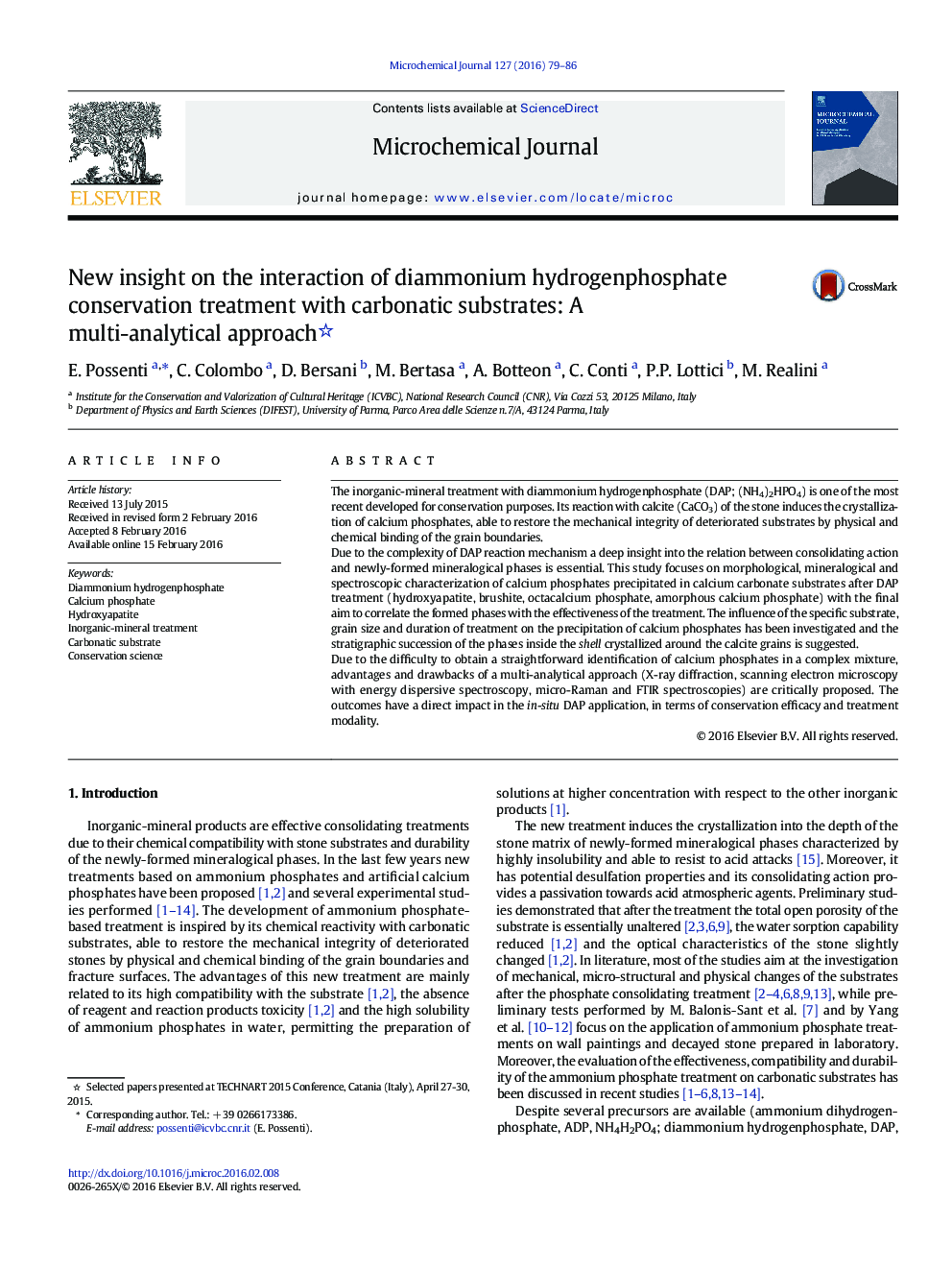| Article ID | Journal | Published Year | Pages | File Type |
|---|---|---|---|---|
| 1227503 | Microchemical Journal | 2016 | 8 Pages |
•DAP is an inorganic-mineral treatment for the consolidation of decayed carbonatic substrates•The complex DAP reaction with calcite is highlighted and investigated•Identification of formed mineralogical phases in mixture with calcite is critically proposed by a multi-analytical approach•The role of the substrate and treatment time on DAP reaction is established•The correlation between formed phases and treatment effectiveness is discussed
The inorganic-mineral treatment with diammonium hydrogenphosphate (DAP; (NH4)2HPO4) is one of the most recent developed for conservation purposes. Its reaction with calcite (CaCO3) of the stone induces the crystallization of calcium phosphates, able to restore the mechanical integrity of deteriorated substrates by physical and chemical binding of the grain boundaries.Due to the complexity of DAP reaction mechanism a deep insight into the relation between consolidating action and newly-formed mineralogical phases is essential. This study focuses on morphological, mineralogical and spectroscopic characterization of calcium phosphates precipitated in calcium carbonate substrates after DAP treatment (hydroxyapatite, brushite, octacalcium phosphate, amorphous calcium phosphate) with the final aim to correlate the formed phases with the effectiveness of the treatment. The influence of the specific substrate, grain size and duration of treatment on the precipitation of calcium phosphates has been investigated and the stratigraphic succession of the phases inside the shell crystallized around the calcite grains is suggested.Due to the difficulty to obtain a straightforward identification of calcium phosphates in a complex mixture, advantages and drawbacks of a multi-analytical approach (X-ray diffraction, scanning electron microscopy with energy dispersive spectroscopy, micro-Raman and FTIR spectroscopies) are critically proposed. The outcomes have a direct impact in the in-situ DAP application, in terms of conservation efficacy and treatment modality.
